16 Easy Ways to Keep Grocery Store Herbs Thriving
Growing herbs from the grocery store is an easy way to keep fresh flavors on hand without constant trips to the market. With a little care, those small pots of basil, parsley, or mint can thrive at home and keep producing for weeks or even months. A few simple steps can make the difference between plants that fade quickly and herbs that stay healthy and useful in your kitchen.
This post may contain affiliate links, which helps keep this content free. Please read our disclosure for more info.
Choose Healthy Plants
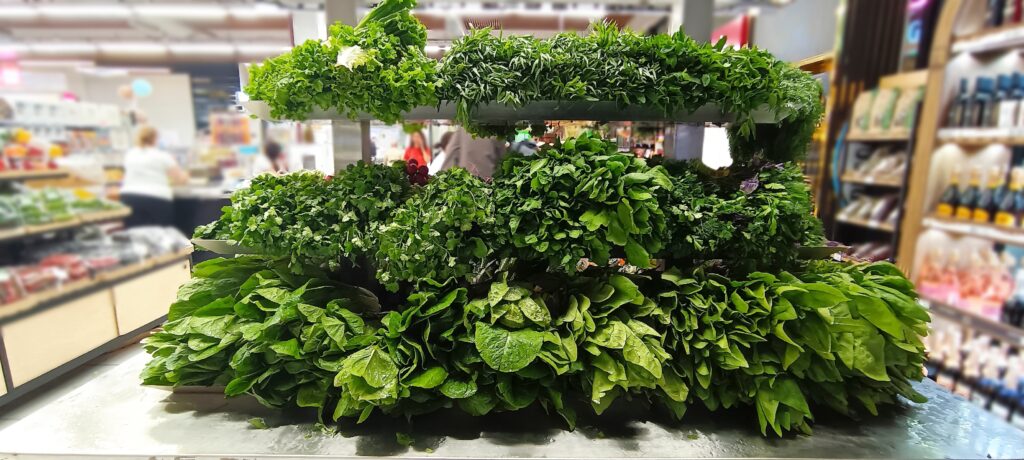
When buying grocery store herbs, start with the healthiest plant you can find. Look for leaves that are vibrant green without yellow or brown spots. Stems should stand upright rather than drooping. If a plant already looks weak in the store, it may struggle to recover once you bring it home.
Check under the leaves for signs of pests like tiny webs or sticky residue. Roots poking out of the container holes are a good sign of active growth but also mean the plant may need repotting soon. Avoid herbs that are overly tall and leggy, as they’ve likely been deprived of light. Beginning with a strong plant sets you up for better success.
Repot Immediately
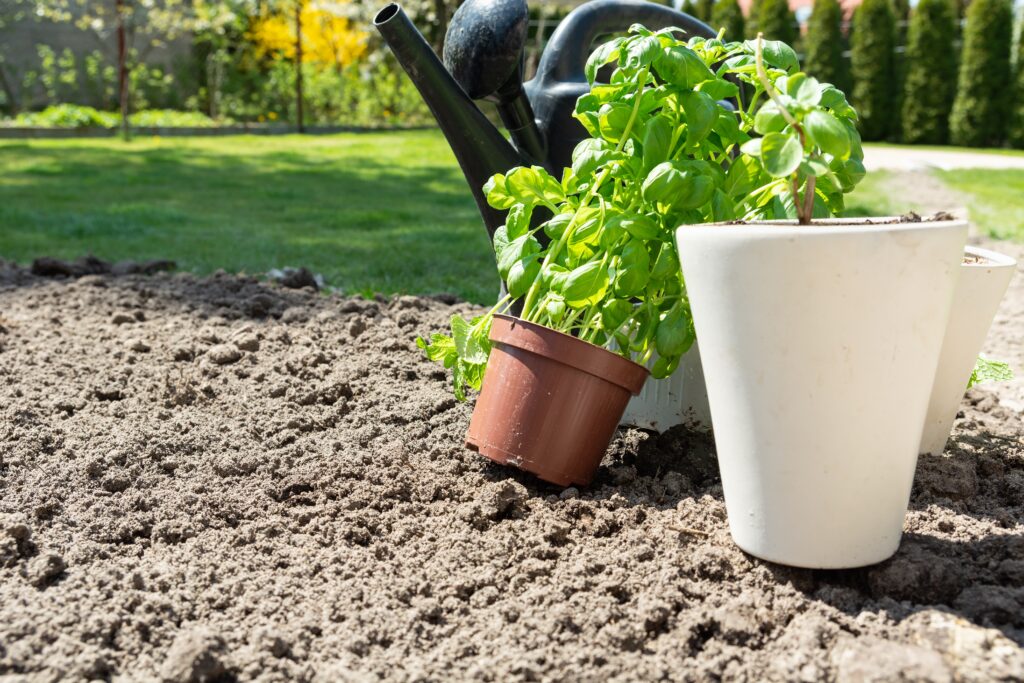
Grocery store herbs usually come in small plastic containers that don’t give the roots much space. Transplanting them into larger pots helps the plant establish a stronger root system. Choose containers that are at least twice the size of the original one to give the plant room to spread. Doing this right away prevents the plant from becoming root-bound.
Fresh soil in a new pot also provides more nutrients than the compacted store-bought soil. Herbs adjust quickly when repotted if done with care. Gently loosen the root ball before placing it into the fresh soil. This small step can extend the life of your herbs significantly.
Use Fresh Potting Mix
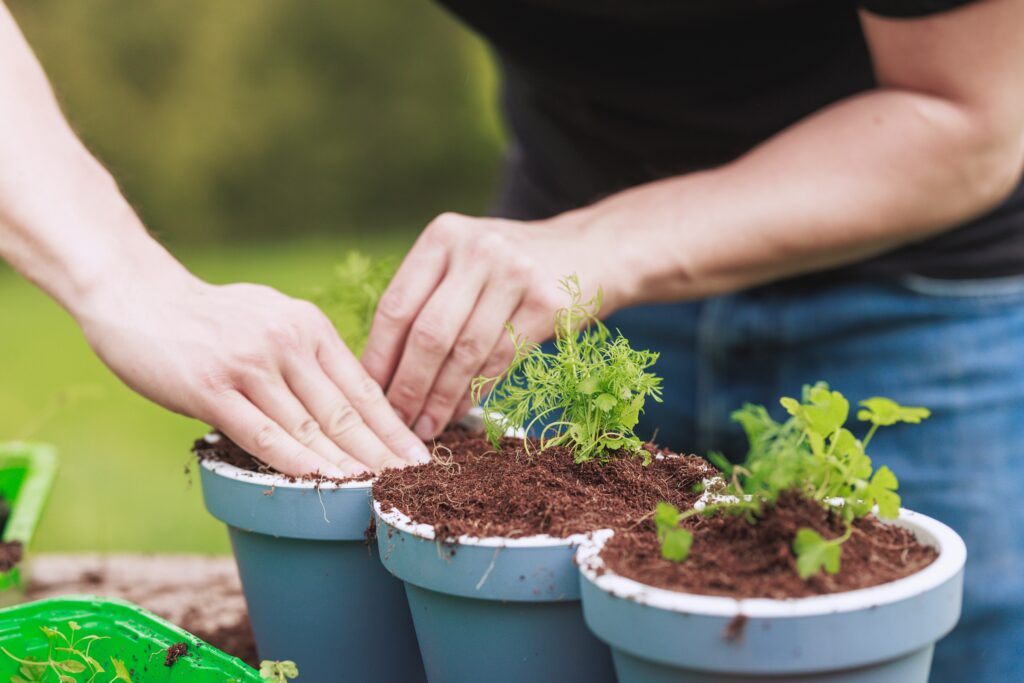
The soil in store-bought herb pots is often lightweight and dries out quickly. Switching to a good-quality potting mix provides better drainage and a steady supply of nutrients. Avoid using garden soil since it can be too heavy for containers and may hold too much moisture. A light, airy mix works best for herbs grown indoors.
Adding a little perlite or sand can help the soil drain more effectively. This prevents water from collecting around the roots, which can lead to rot. You don’t need special mixes for each herb; a general potting blend is fine for most varieties. Starting with healthy soil creates a strong foundation for growth.
Provide Good Drainage
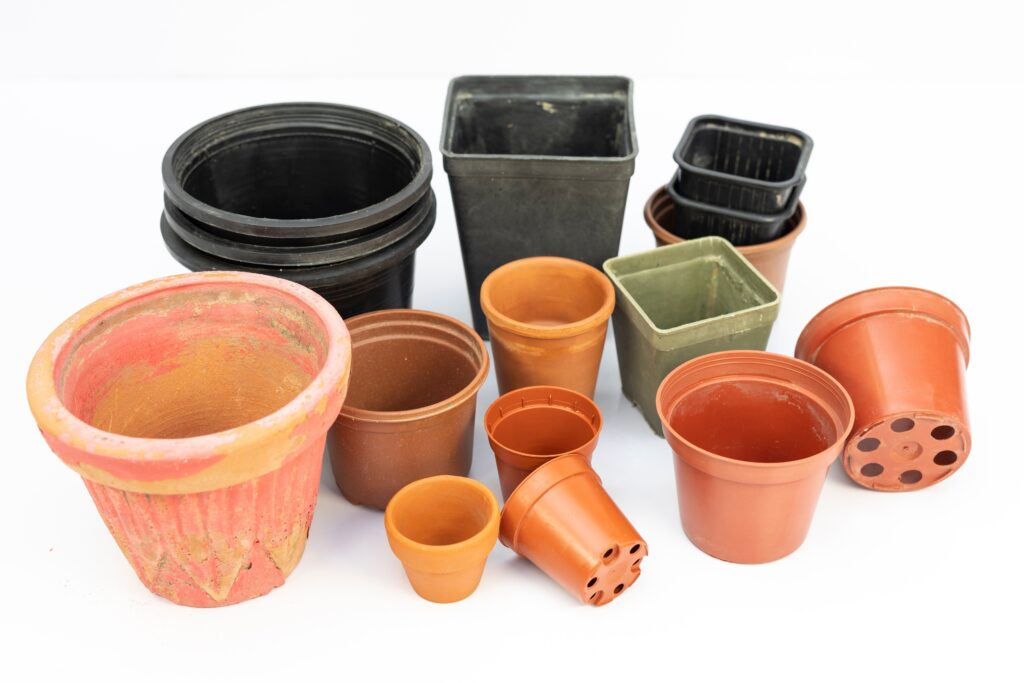
Herbs dislike sitting in soggy soil. Always use pots with drainage holes at the bottom so excess water can escape. Without this, roots suffocate and disease can set in quickly. A saucer under the pot will catch water and protect your surfaces.
If you’re reusing a decorative pot without holes, consider placing a smaller draining pot inside it. Another option is to line the bottom with small stones to create space for water to collect. Proper drainage reduces the chances of fungus and keeps the roots strong. Good airflow around the soil also helps prevent problems.
Water Consistently
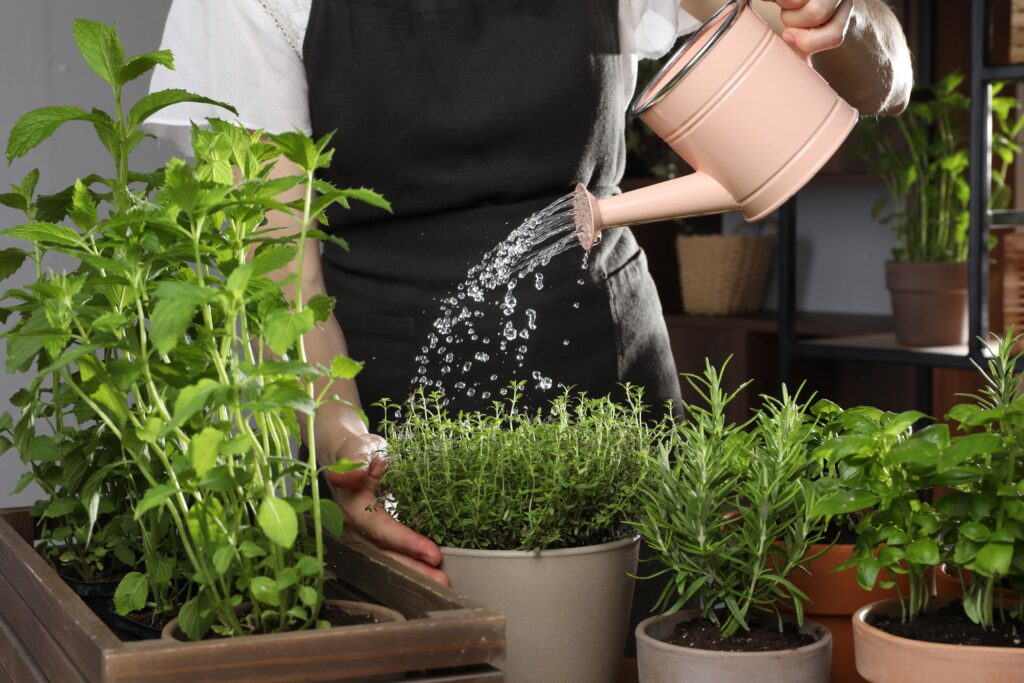
Watering too much or too little can quickly weaken grocery store herbs. A good rule of thumb is to let the top inch of soil dry before watering again. Stick your finger in the soil to check moisture levels rather than guessing. Consistent watering keeps the plants from wilting and bouncing between stress points.
Each herb has slightly different water needs, so pay attention to the plant’s condition. Basil, for example, likes more frequent watering, while rosemary can handle drier soil. Using room-temperature water is best since cold water can shock the roots. Over time, you’ll get a feel for what each herb prefers.
Give Plenty of Light
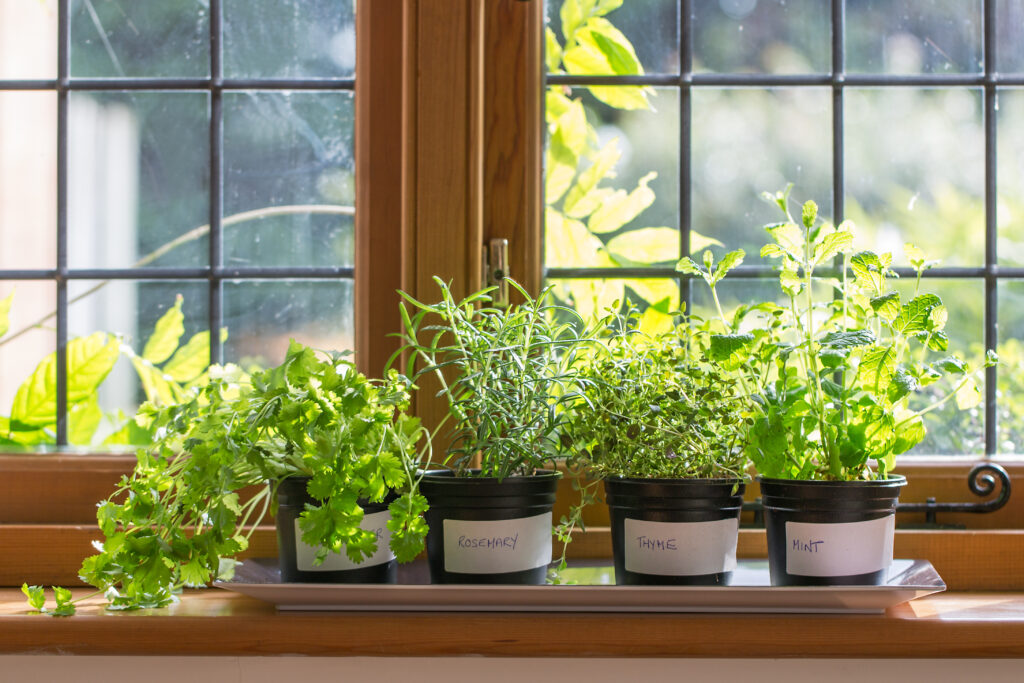
Most herbs need at least 6 to 8 hours of sunlight daily. A bright windowsill is often the easiest place to grow them indoors. If natural light is limited, grow lights can be used to supplement. Position the plants close enough to the light source without touching it.
Rotate the pots every few days to make sure all sides of the plant receive even light. Herbs grown in poor light conditions often become tall and spindly. By providing enough sun, you encourage fuller, bushier growth. Healthy leaves are always a sign the plant is getting what it needs.
Trim Regularly
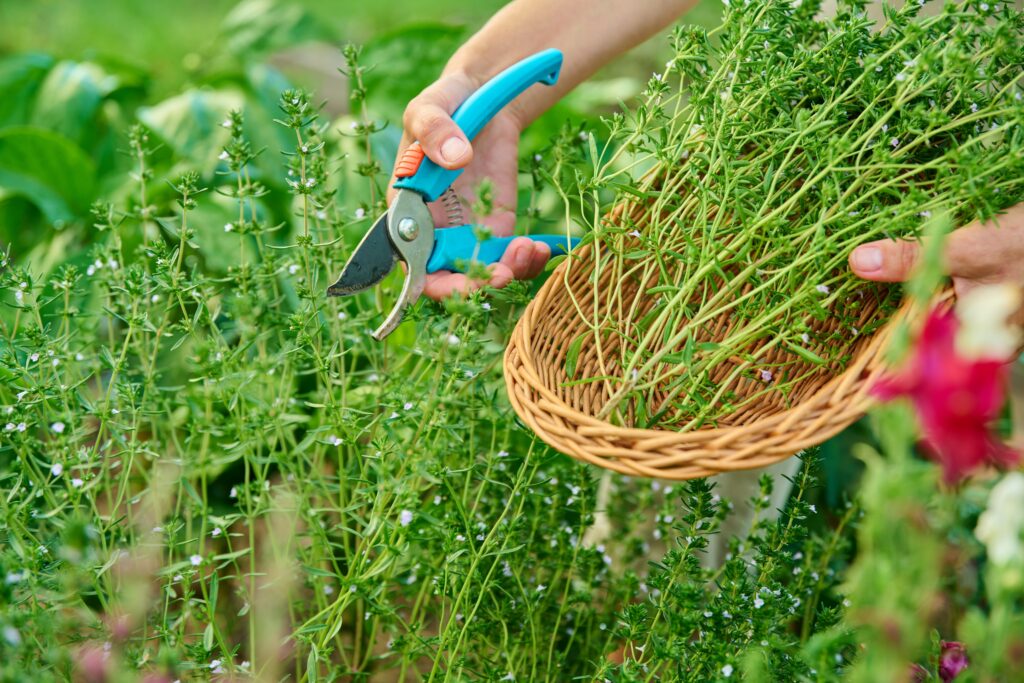
Cutting back herbs encourages them to grow more leaves instead of becoming tall and sparse. Regular trimming keeps the plant compact and manageable. Even if you don’t need the leaves right away, snip a few to encourage growth. Use clean scissors or shears to prevent damaging the stems.
Herbs like basil and mint respond especially well to frequent harvesting. Pinching off the tips encourages branching and makes the plant fuller. Any extra leaves can be dried or frozen for later use. This way, trimming benefits both your cooking and the plant’s health.
Avoid Harvesting Too Much at Once
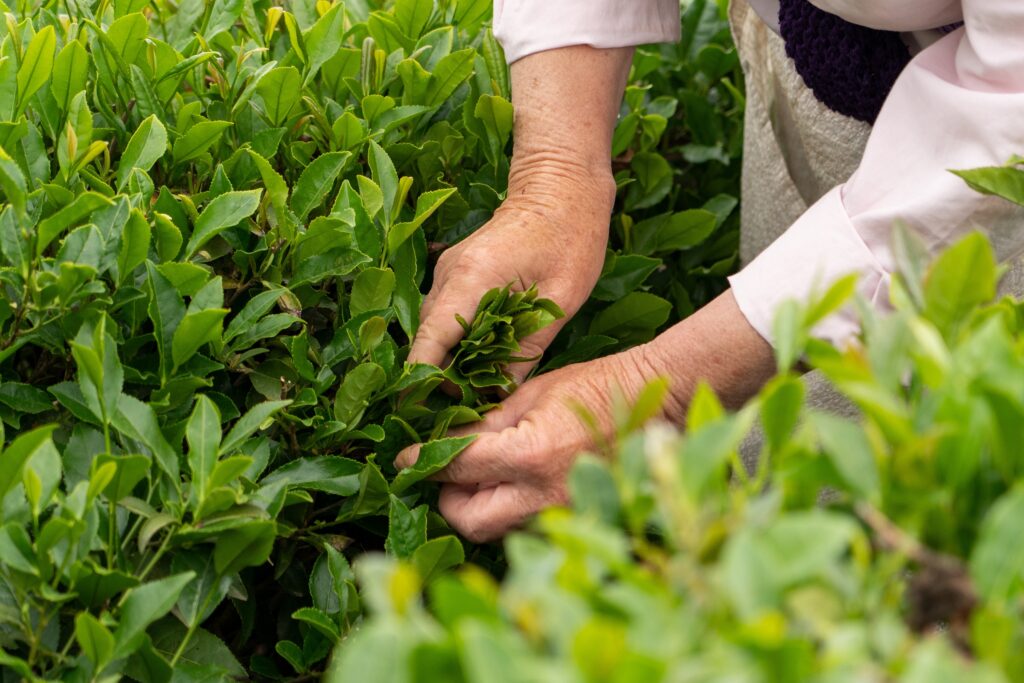
It’s tempting to cut a large amount of herbs for cooking, but this can stress the plant. Removing more than one-third of the growth at a time leaves it struggling to recover. Smaller, frequent harvests are healthier for the plant. They also give you a steady supply of fresh herbs over time.
Think of harvesting as giving the plant a haircut rather than stripping it bare. Taking leaves from different areas helps balance the plant’s growth. This allows the stems to regrow evenly instead of leaving one side bare. A little restraint goes a long way in keeping herbs productive.
Rotate the Plants
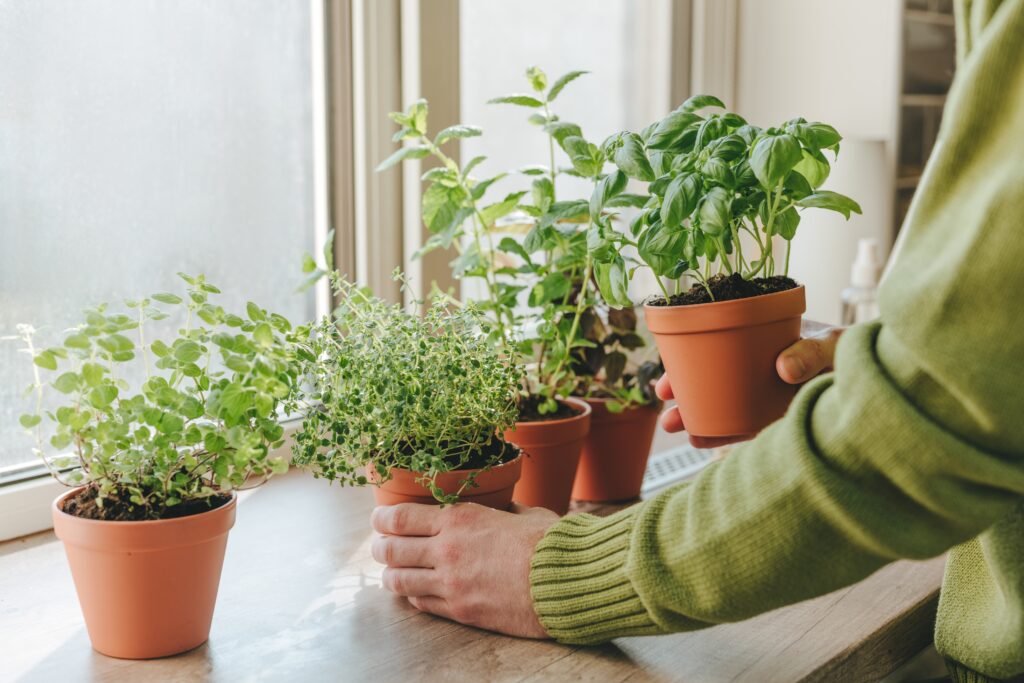
Plants naturally grow toward the light source, which can make them lean. Turning the pots every few days prevents lopsided growth. This ensures the entire plant develops evenly and looks fuller. Balanced growth also makes the plant stronger overall.
Rotation is especially important for windowsill-grown herbs. Without it, they may tip over as they stretch toward the sun. By giving each side equal exposure, you reduce the need for constant staking. It’s a small habit that pays off with healthier plants.
Fertilize Sparingly
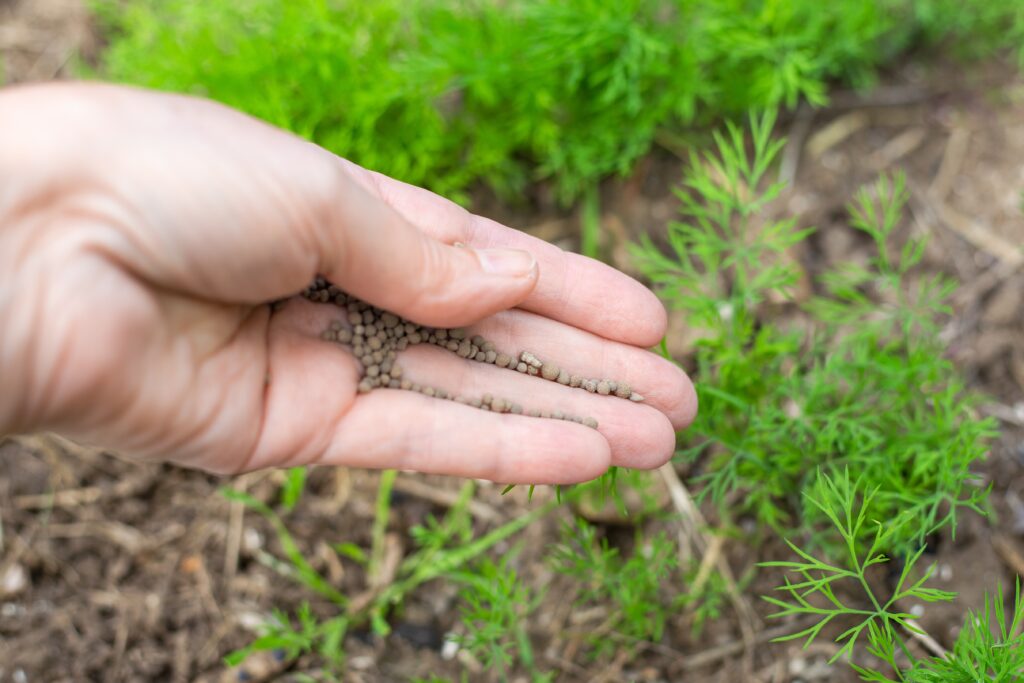
Herbs don’t need heavy feeding to thrive. A diluted liquid fertilizer every few weeks is enough to support healthy growth. Too much fertilizer can actually weaken the plant and reduce flavor. Mild feeding helps maintain a good balance.
Choose an all-purpose fertilizer that’s safe for edible plants. Always apply it after watering so nutrients don’t shock the roots. Organic options like fish emulsion or compost tea work well if you prefer natural choices. Consistent but light feeding encourages steady, healthy growth.
Check for Pests
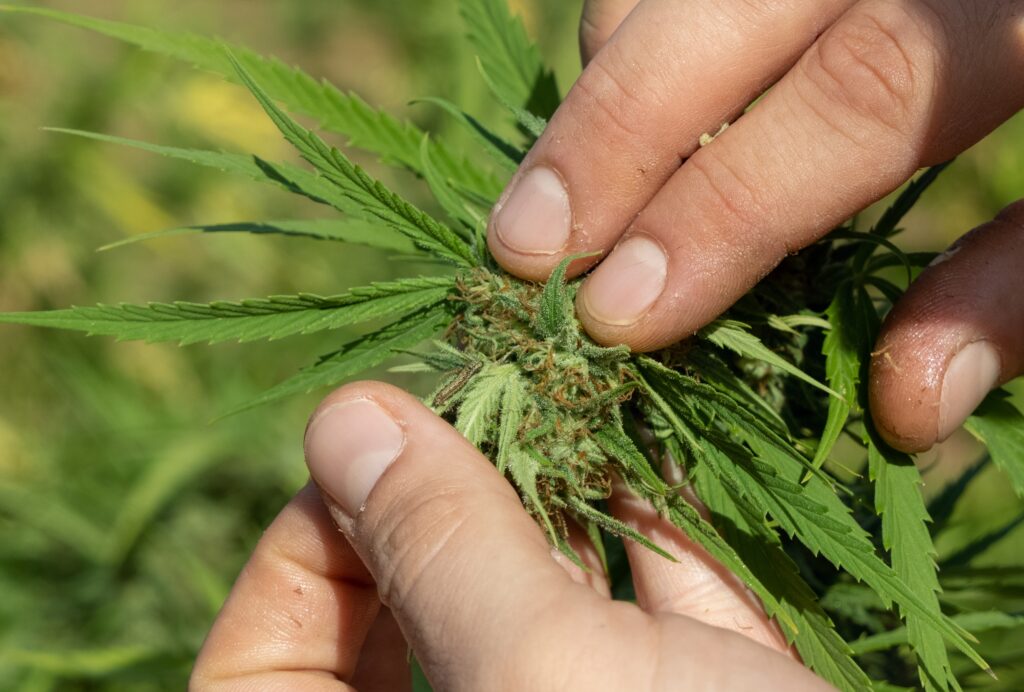
Even indoor herbs can attract pests like aphids or spider mites. Inspect leaves regularly, especially the undersides where insects like to hide. Sticky residue or tiny webs are early signs of trouble. Catching problems early keeps them from spreading.
If you do see pests, wash the plant with a gentle spray of water. Mild soap solutions can also help remove insects without harming the plant. Isolating an affected plant prevents pests from spreading to others nearby. A watchful eye keeps your herbs healthier in the long run.
Keep Indoor Humidity Balanced
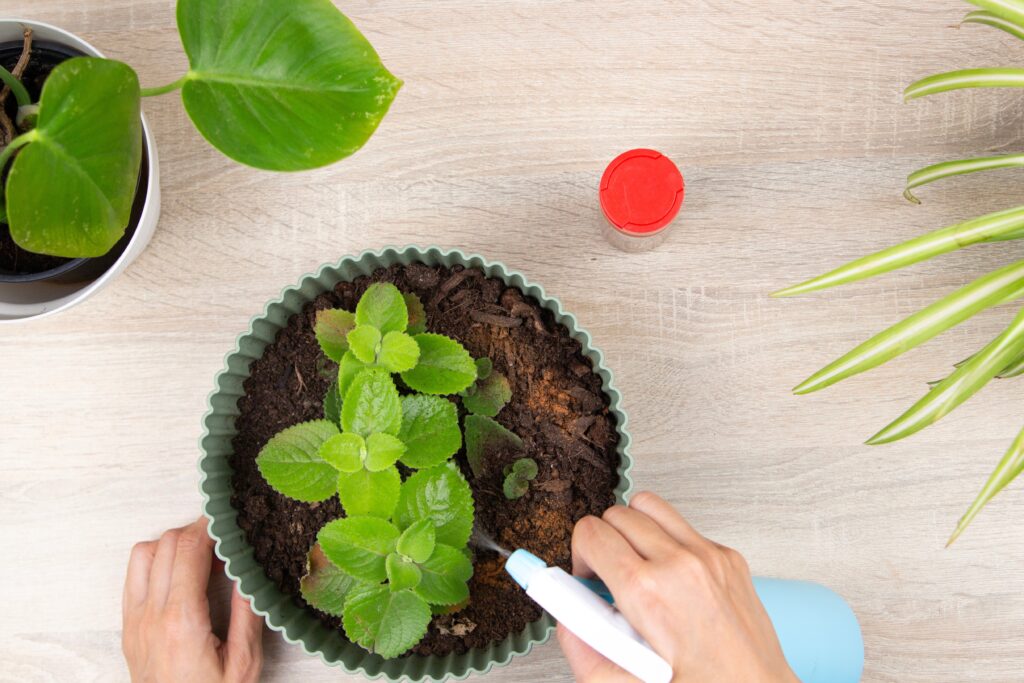
Indoor air, especially during colder months, can become very dry. Herbs benefit from a bit of extra humidity around them. Lightly misting the leaves or placing a tray of water nearby helps. Some gardeners even group herbs together to create a pocket of moisture.
Dry air can make herbs wilt quickly and develop brittle leaves. On the other hand, too much humidity can encourage mildew. Finding a balance keeps the leaves soft and vibrant. Watch how your plants respond and adjust as needed.
Pinch Flower Buds
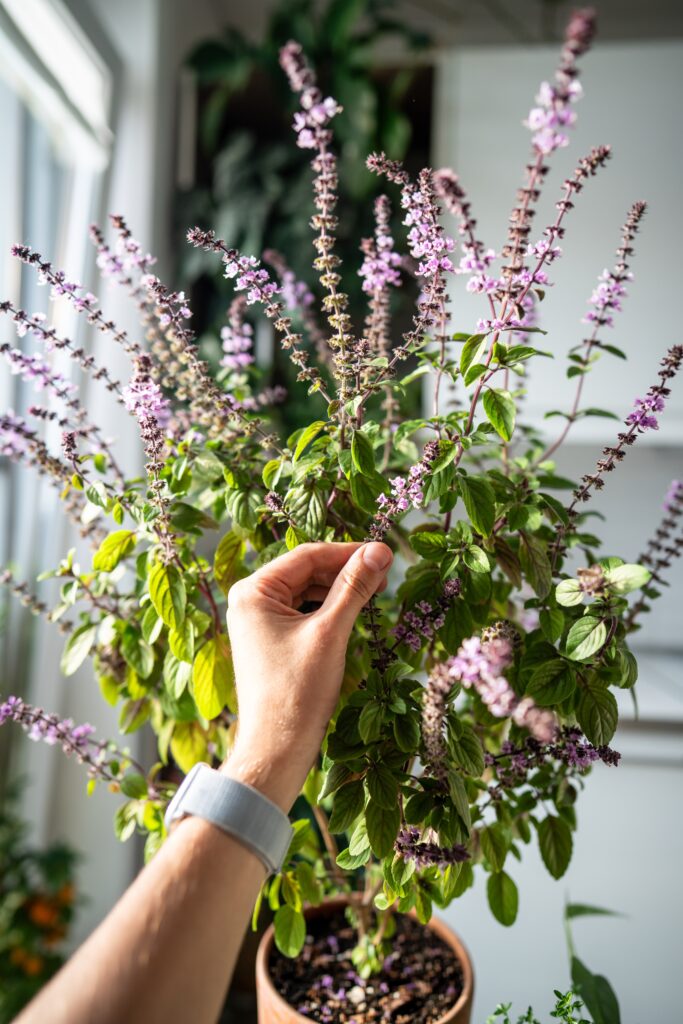
When herbs begin to flower, energy shifts from leaf production to bloom production. This often makes the leaves lose flavor. Pinching off flower buds directs energy back into leafy growth. Doing so keeps your herbs fresh-tasting longer.
Some herbs like basil bolt to flower quickly in warm conditions. Regularly checking for buds helps you catch them before they spread. Removing them doesn’t harm the plant and can actually extend its usefulness. Keeping herbs in the leafy stage benefits both taste and harvest.
Group Herbs with Similar Needs
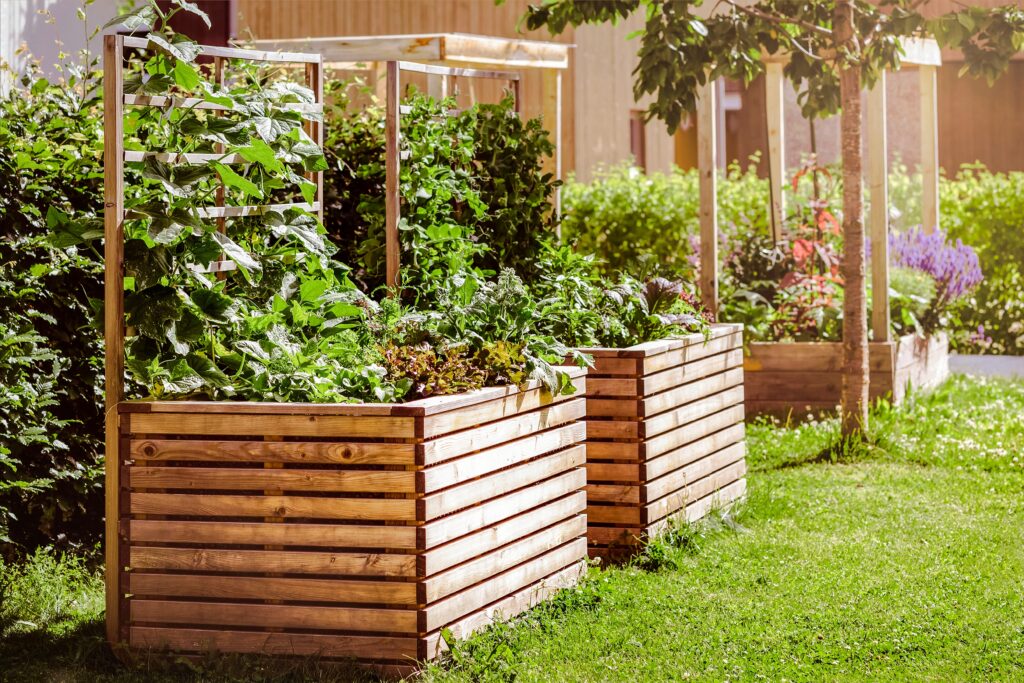
Not all herbs like the same growing conditions. Basil and parsley thrive with moist soil, while rosemary and thyme prefer drier environments. Grouping plants with similar needs makes care easier. You won’t have to worry about overwatering one while underwatering another.
This also allows you to organize your growing space more efficiently. Herbs with higher water needs can be placed closer to the sink or misting spot. Drier-loving herbs can be positioned separately to avoid excess moisture. Matching their preferences leads to healthier plants overall.
Provide Air Circulation
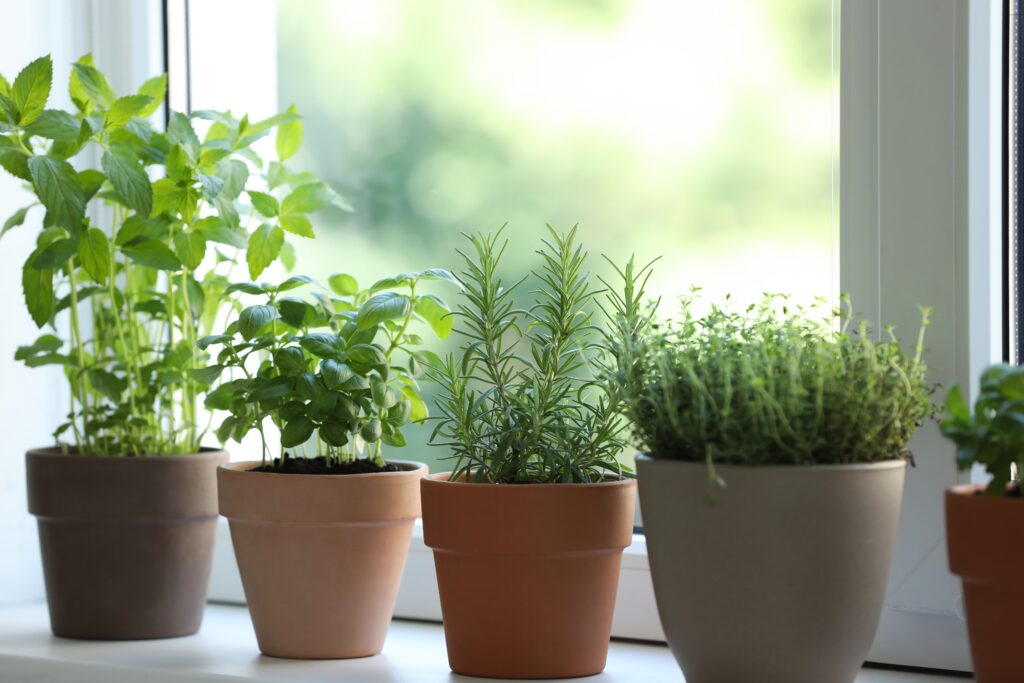
Stagnant air can encourage fungal growth on herbs. Placing them where there’s light airflow reduces this risk. A gentle fan or an open window nearby works well without drying them out. Air circulation also helps strengthen stems.
When plants are crowded together, airflow becomes even more important. Space them out so leaves aren’t constantly touching. This makes it harder for disease to spread from one plant to another. A little extra space and airflow can prevent many common problems.
Harden Off Before Moving Outdoors
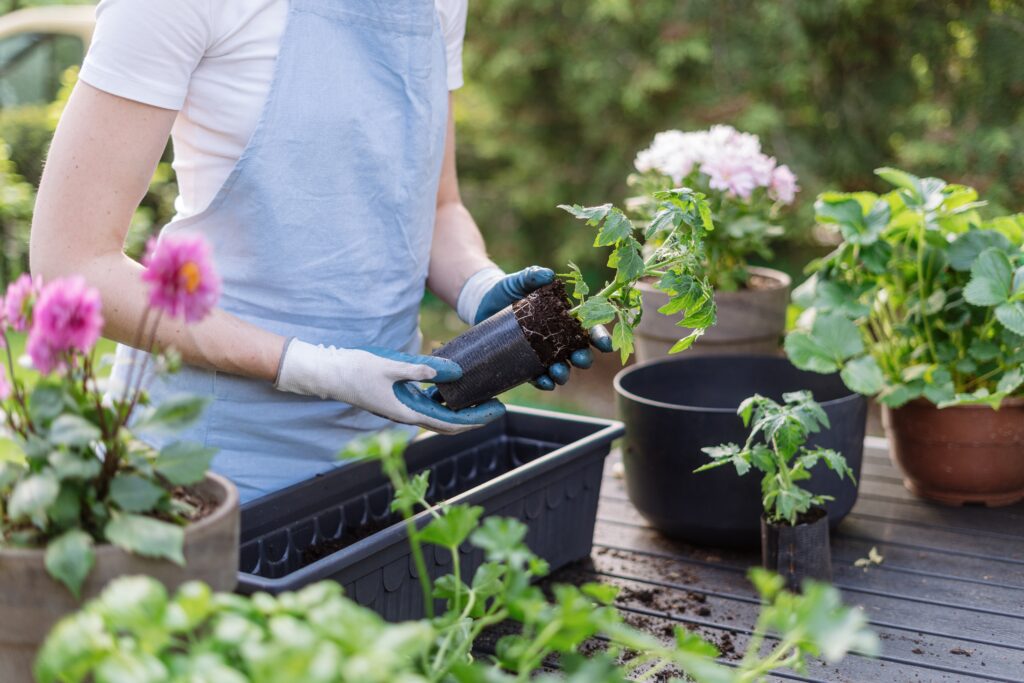
If you plan to move herbs outside, don’t do it all at once. Sudden changes in temperature and light can shock them. Instead, gradually introduce them to outdoor conditions over a week or two. Start with a few hours outdoors and increase daily.
This slow transition allows the plant to adjust without stress. Herbs will be less likely to wilt or burn in direct sun. Hardened-off plants settle into the garden or balcony more smoothly. Taking your time makes the change less risky.
This article originally appeared on Avocadu.
